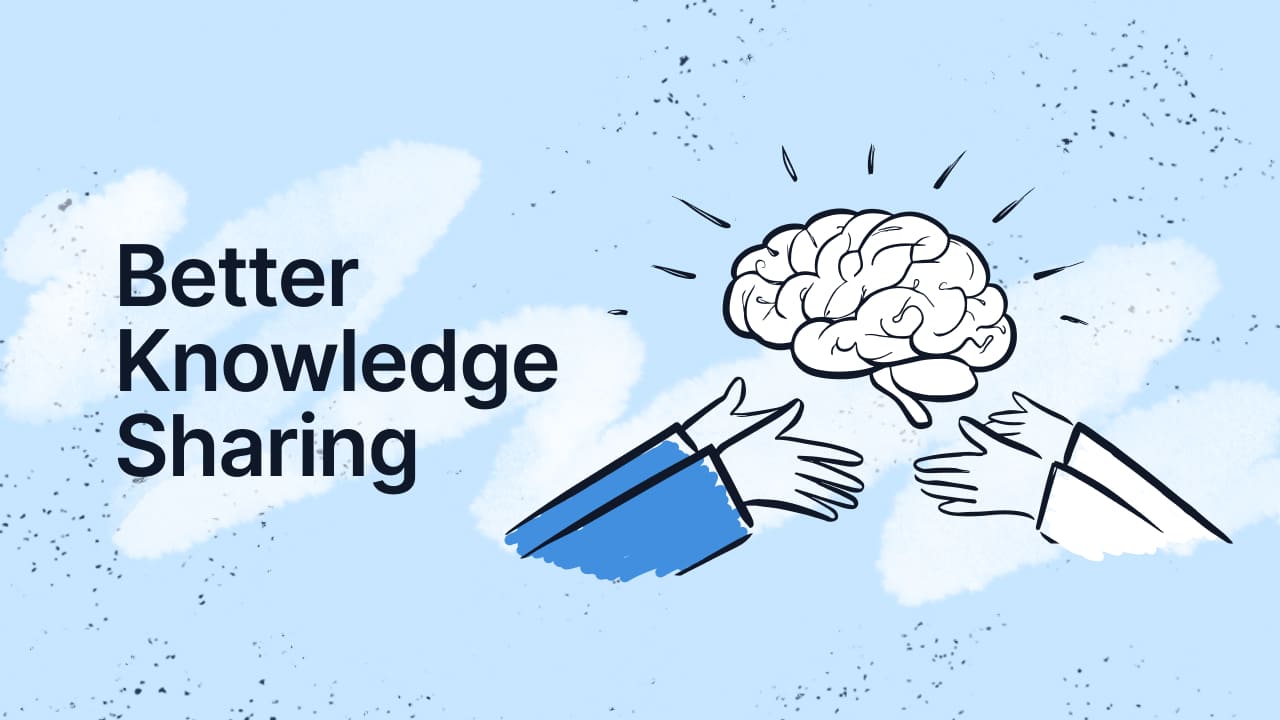In Service Management, there's a vast amount of knowledge at play—some of it is documented and formalized, and some of it is not. Implicit knowledge may not be as straightforward to manage as explicit knowledge, which is easy to capture and share through manuals or databases.
What happens with this knowledge that isn’t so easily put into words? In this article, we’ll explore implicit knowledge, why it’s crucial for ITSM, and how it can be effectively managed within your organization. Understanding and managing this type of knowledge can significantly impact how smoothly your IT operations run.
What is implicit knowledge?
Implicit knowledge, sometimes referred to as "know-how," is the type of knowledge that people carry with them based on experience, intuition, and informal learning. Unlike explicit knowledge, which is easily documented and shared, implicit knowledge is harder to articulate.
For example, it might include the steps an experienced IT technician takes to troubleshoot a recurring issue, steps they know work but haven't necessarily documented.

Definition of knowledge types: Explicit, implicit, and tacit
To fully grasp the concept of implicit knowledge, it’s helpful to compare it with other types of knowledge:
- Explicit knowledge: This is the knowledge that is clearly documented and easily shared. Examples include user manuals, policies, and standard operating procedures.
- Implicit knowledge: This knowledge is understood and applied but not formally documented. It’s often gained through experience and is demonstrated in practice.
- Tacit knowledge: This is deeply embedded knowledge that is often unconscious and difficult to express. It includes personal insights, instincts, and skills developed over time.
Characteristics of implicit knowledge
Implicit knowledge is the understanding or know-how that individuals have but might not be fully aware of or able to communicate easily. It’s the kind of knowledge that comes from experience, intuition, and informal learning, and it’s often applied automatically without much thought.
- Experience-based: Implicit knowledge is gained through hands-on experience. For instance, an IT technician who has resolved similar issues multiple times may develop a quick, efficient method for troubleshooting.
- Context-specific: This knowledge is often tied to specific situations or environments, making it challenging to generalize or formalize.
- Difficult to articulate: Unlike explicit knowledge, which can be easily written down, implicit knowledge is more intuitive and harder to express in words.
- Inherent in tasks: Implicit knowledge is frequently required to accomplish specific tasks, even when not explicitly stated in instructions.
- Challenging to record: Unlike explicit knowledge, implicit knowledge is tough to document because it's about understanding and interpreting, not just knowing something.
- Unintentionally shared: People often transmit implicit knowledge without realizing it. They do this through their actions and behavior, not by teaching.
- Dynamic: Implicit knowledge develops as individuals gain more experience or as circumstances and contexts shift. It's flexible and can easily adapt to new information.

Importance of Knowledge Management
Knowledge Management is a practice that ensures the right information is available to the right people at the right time. This is critical for improving decision-making, problem-solving, and overall efficiency in Service Management.
While explicit knowledge is straightforward to manage, implicit and tacit knowledge require more nuanced approaches, as they are more difficult to capture and share.
The role of implicit knowledge in ITSM
Managing knowledge effectively includes not only capturing explicit information but also understanding and leveraging implicit knowledge. This type of knowledge is crucial because it often fills the gaps left by formal documentation.
Implicit knowledge can influence how effectively teams respond to issues, resolve problems, and design services. This knowledge helps IT teams navigate complex scenarios, make informed decisions in real-time, and maintain a level of service continuity that purely documented procedures might not fully address.
It plays a particularly important role in ITIL processes like Problem Management, Incident Management, and Service Design. Let's see what this looks like with some examples:
Problem Management
In Problem Management, implicit knowledge can help identify and resolve underlying issues that cause incidents.
Example:
An experienced problem manager might intuitively know where to look for the root cause of a recurring issue based on their understanding of the system’s history. This ability to “cut through the noise” and focus on the most likely cause is a form of implicit knowledge that can significantly speed up problem resolution.
Incident Management
In Incident Management, implicit knowledge can be key in quickly restoring services and minimizing impact.
Example:
Service desk staff might use their implicit knowledge of the business’s priorities to quickly decide which incidents to address first. They might prioritize an incident affecting a high-revenue-generating system, even if other incidents are technically more severe, based on their understanding of the business impact.
Service Design
During Service Design, implicit knowledge contributes to creating IT services that are well-aligned with business needs.
Example:
An IT architect might rely on implicit knowledge about how different departments use technology to design services tailored to their specific needs. This knowledge, gained through years of working closely with different teams, helps build services that are not only technically sound but also meet users' practical needs.
Challenges of implicit knowledge
While implicit knowledge is invaluable, sharing it within an organization poses several challenges. Unlike explicit knowledge, which can be easily documented and distributed, implicit knowledge is often harder to transfer. This can create bottlenecks in knowledge sharing, leading to potential inefficiencies or knowledge loss.
Difficult to capture
Challenge: Implicit knowledge often resides in the minds of experienced staff and is difficult to articulate. For example, a network administrator might have an intuitive sense of when a network will experience high traffic based on past experience, but explaining how they arrived at that conclusion can be challenging.
Tip: Encourage storytelling and informal knowledge sharing.
Create opportunities for experienced staff to share their insights in a more narrative format, such as during team meetings or informal "lunch and learn" sessions. This allows them to communicate their thought processes in a more natural way, making it easier for others to understand and learn from their experiences.
Hard for new members
Challenge: Transferring implicit knowledge often requires a hands-on approach. New team members need time to observe and learn from more experienced colleagues. This can be a slow process and may not always be effective if there’s a gap in understanding.
Tip: Implement mentorship and shadowing programs.
Pair new hires with seasoned professionals to facilitate the transfer of implicit knowledge. Encourage mentors to not only demonstrate their techniques but also explain their reasoning behind decisions. This helps bridge the gap between implicit knowledge and actionable insight.
Risk of knowledge loss
Challenge: When experienced employees leave, they take their implicit knowledge with them, which can lead to knowledge gaps and inefficiencies.
Tip: Conduct regular knowledge audits and create knowledge repositories.
Periodically review the knowledge within your team, identifying areas where implicit knowledge is heavily relied upon. Capture this knowledge in a structured format, such as case studies or decision trees, and store it in a centralized knowledge repository that the entire team can access.
Tied to very specific tasks
Challenge: Implicit knowledge is often tied to specific experiences and contexts, making it difficult to generalize or document. For example, a senior IT professional might know exactly how to troubleshoot a rare network issue due to years of experience, but explaining the thought process behind their solution could be nearly impossible.
Tip: Use scenarios and case studies to capture complex knowledge.
When documenting implicit knowledge, consider creating detailed scenarios or case studies that illustrate the problem, the solution, and the rationale behind it. This approach can help others understand the context in which the implicit knowledge was applied, making it more accessible.

More actionable ideas to improve knowledge transfer
Here are some actions you can take to improve knowledge sharing in your organization and foster a culture of learning and growth.
Offer learning opportunities
Establish regular learning opportunities. These can include formal training sessions and workshops where experienced team members share their practical insights and expertise. If you have a hybrid or remote team, webinar platforms are an absolute must to ensure that the entire team can benefit of these learning spaces.
Informal settings, such as “lunch and learn” sessions or team brainstorming meetings, also provide valuable opportunities for employees to exchange knowledge in a relaxed and open atmosphere. Such initiatives help transfer knowledge and foster a culture of continuous learning and improvement within the organization.
Process transparency
Employees might hesitate to share their knowledge if they feel that their innovations or deviations from established procedures could be seen as undermining official processes.
For example, if someone discovers a more efficient way to complete a task that deviates from documented procedures, they might worry about being penalized or criticized. To overcome this, creating a culture where process improvements are welcomed and reviewed constructively is important.
Encourage employees to share their insights openly and ensure that changes are evaluated and integrated into official procedures when appropriate. This approach helps refine processes and reassures employees that their contributions are valued and considered for continuous improvement.
Create online communities
Internal forums or discussion groups offer spaces where employees can ask questions, seek advice, and share their experiences. By fostering a collaborative environment, these communities help break down silos and encourage employees to engage with one another.
Recognizing and rewarding valuable contributions in these forums can further motivate team members to participate and share their knowledge.
Implement knowledge-sharing software
Knowledge-sharing software can further support your efforts by providing a platform for documenting and accessing informal knowledge. Tools like wikis or collaborative platforms enable employees to contribute their insights and experiences, making it easier for others to learn from them.
This approach ensures that valuable knowledge is not lost and can be easily updated as new information becomes available. Choosing software that encourages user interaction and feedback is crucial, as it helps maintain the relevance and accuracy of the shared knowledge.

Conclusion
Implicit knowledge is important in ITIL practices, influencing how IT services are managed and improved. While it’s more challenging to document and share than explicit knowledge, it contributes significantly to effective problem-solving and service delivery.
Addressing the management of implicit knowledge helps ensure that experienced insights are not lost and can be utilized to continuously improve operations. Focusing on capturing and transferring this type of knowledge strengthens IT processes and enhances overall service quality.
Understanding and managing implicit knowledge leads to a more agile and informed IT team, ultimately supporting better service outcomes and operational efficiency.














.jpg?upsize=true&upscale=true&width=780&height=205&name=ITIL%20Foundation%20Exam%20(2).jpg)
